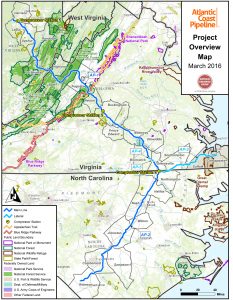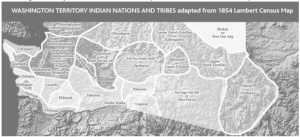Forest Service summaries: Litigation Weekly Oct 26
A preliminary injunction was denied for the Quartz Integrated Project on the Umpqua National Forest because the Forest adequately addressed new information about red tree voles. (D. Or.)
The Supreme Court stayed further proceedings in the “kids’ climate change” case.
(New cases.) Both cases challenge the decision to sell wild horses from the Modoc National Forest without complying with or formally changing a policy that prohibits commercial slaughter of the horses.
(New case.) Plaintiffs claim that authorization of activities that contribute to climate change violate the U. S. Constitution. (D. Or.)
(New case.) This case involves that Seiad-Horse Risk Reduction Project on the Klamath National Forest involving hazard tree removal and post-fire salvage logging and compliance with the forest plan and NEPA. (E.D. Cal.)
Blogger’s notes:
The Cascadia case was discussed here when it was filed. The case involves the application of “survey and manage” requirements in the Northwest Forest Plan to red tree voles. Red tree vole nesting sites are protected from logging unless the land manager determines the site is “non-high priority” (“NHP”). Plaintiffs objected to the NHP designations for the project area. Additional surveys occurred after the objection process and the Forest subsequently released “amendments to the EA” to “designate” additional NHP sites. There was no public opportunity to review or object to these sites.
I am not that familiar with the workings with the Northwest Forest Plan, but I see some problems here. “Designation” of sites for long-term management, especially if they would be suitable for timber production, is a forest plan decision, so I think what is really required here is a plan amendment process that would allow full public participation in the designation of each site. In addition, the criteria for designating NHP (presumably from the NWFP) seem to all apply at a large scale without considering the importance of the actual site being designated, so it is hard to see any rationale for the designation (and the court opinion doesn’t provide one). The court then finds that “plaintiffs had multiple opportunities to comment on the FS proposal to designate red tree vole sites as NHP,” but none of those occurred for the post-objection additions. The court regards all of this as “minor changes.” While viewing this as a NEPA problem might allow the new information to be considered not significant enough to trigger a supplemental EA, minor changes in a forest plan nevertheless require an amendment process. Maybe someone could explain how this is supposed to work.
The public also had no opportunity to review or comment on how the Forest viewed changes in the resource management plan for adjacent BLM lands. The changes would result in logging in 8 of the 27 red vole sites originally protected by the BLM plan, but the Forest determined (and the court agreed) that this “did not alter the number or spatial distribution of likely extant sites or records, or the amount or proportion of suitable habitat in reserves, and did not compromise the ability of other standards and guidelines or elements of the NWFP to provide a reasonable assurance of species persistence at the watershed scale.” That feels like it dodged the question, but I could buy the BLM assertion that these sites were actually a small part of the overall watershed.
Finally, in looking at the other factors relevant to granting an injunction, the court seems to discount the irreversible environmental damage because “that fact is true in any environmental case.” And it seems to punish plaintiffs for participating in settlement negotiations instead of filing a motion for an injunction earlier. The court does explicitly qualify its holdings as being “at this stage” (meaning for a preliminary injunction), and a fuller airing of the facts might sway the court in the plaintiffs’ favor, but meanwhile logging is ongoing.
Here’s another case that I don’t think has been included in a FS summary.
“San Juan Trail Riders, based in Durango, along with national groups Trails Preservation Alliance and Access Preservation Association, ask the court to set aside a record of decision by the Dolores Ranger District that closed 30 miles of trails to motorcycles and implemented restrictions on others within Rico-West Dolores recreation area.”



